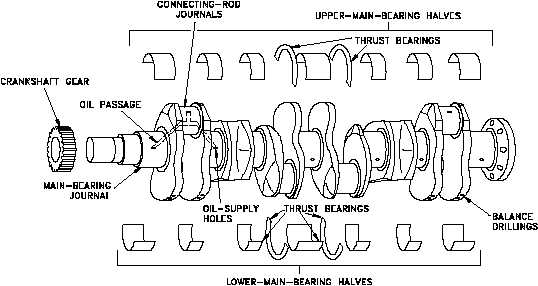Diesel Engine Fundamentals
DOE-HDBK-1018/1-93
DIESEL ENGINES
Figure 7 Diesel Engine Crankshaft and Bearings
Flywheel
The flywheel is located on one end of the crankshaft and serves three purposes. First,
through its inertia, it reduces vibration by smoothing out the power stroke as each
cylinder fires. Second, it is the mounting surface used to bolt the engine up to its load.
Third, on some diesels, the flywheel has gear teeth around its perimeter that allow the
starting motors to engage and crank the diesel.
Cylinder Heads and Valves
A diesel engine's cylinder heads perform several functions. First, they provide the top
seal for the cylinder bore or sleeve. Second, they provide the structure holding exhaust
valves (and intake valves where applicable), the fuel injector, and necessary linkages. A
diesel engine's heads are manufactured in one of two ways. In one method, each
cylinder has its own head casting, which is bolted to the block. This method is used
primarily on the larger diesel engines. In the second method, which is used on smaller
engines, the engine's head is cast as one piece (multi-cylinder head).
Diesel engines have two methods of admitting and exhausting gasses from the cylinder.
They can use either ports or valves or a combination of both. Ports are slots in the
cylinder walls located in the lower 1/3 of the bore. See Figure 2 and Figure 3 for
examples of intake ports, and note their relative location with respect to the rest of the
Rev. 0
ME-01
Page 9


